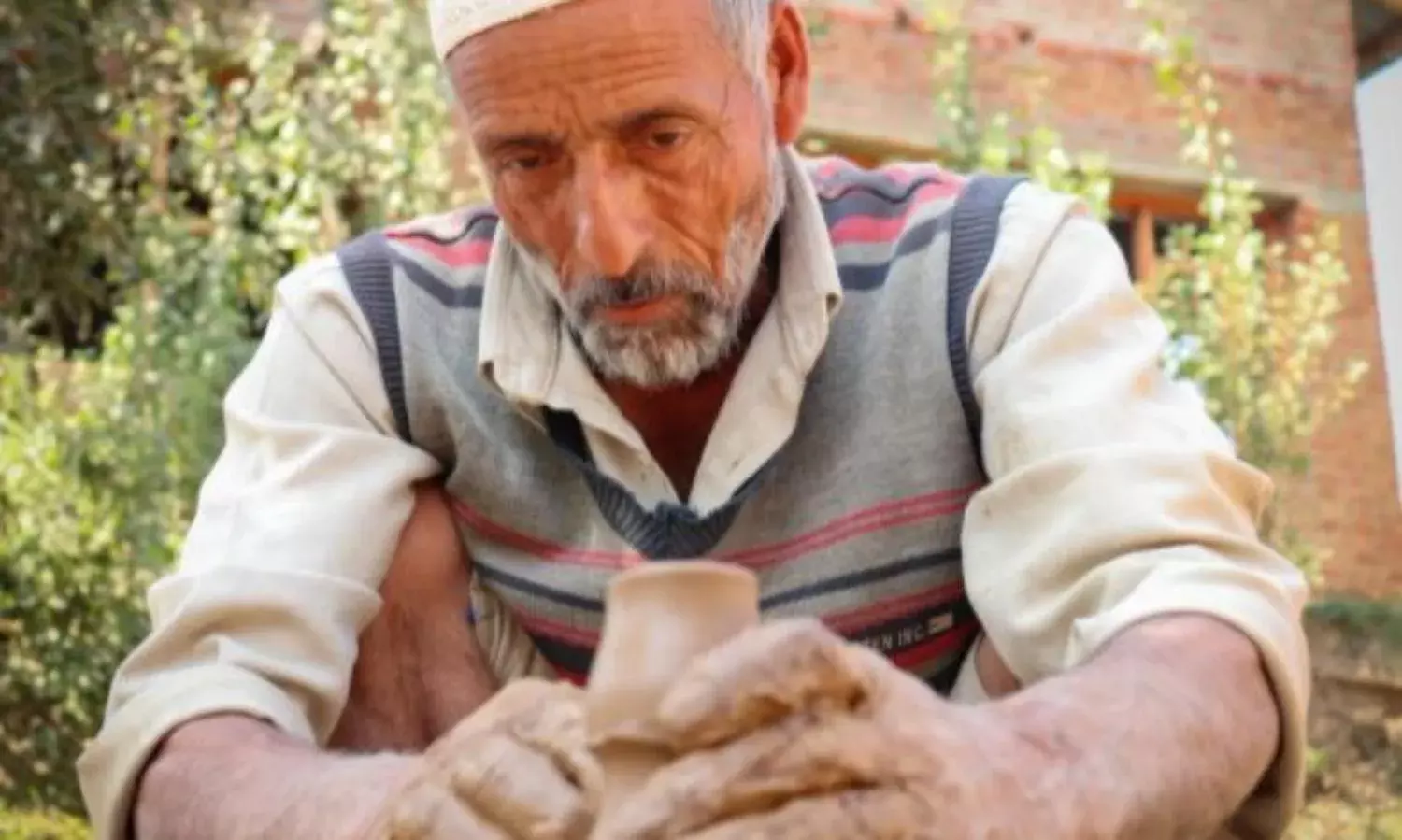‘Now they Call this Craft a Dying Art’
‘We need food to fill our belly, which our family legacy is not able to do’

The earthenware makers of Charan Gam in the district of Budgam are in dire straits. The Covid crises have driven the families of traditional earthenware makers into penury as there is little or no business. Kashmiri pottery, once famous is now struggling. The families that practised this art find the new generation uninterested, one of the major factors being the meagre income from the profession.
Charan gam, located 30 kilometres from Srinagar, is home to some potters still earning their livelihood, but the decline in demand in local markets is a worrying situation for them. The increase in supply and demand for plastic and metallic goods have almost replaced the art in every corner of Kashmir. And the restrictions imposed since the outbreak of covid19 have put them in a precarious financial situation.
Abdul Rasheed Kumar, 46, is unable to sell his pottery due to fear of catching the virus and sometimes the stigma it carries.
“Our decades long customers shut their doors on us because of fear of contracting the contagious virus. I’m a rheumatic, I cannot walk long distances but if I stay home my family will die of hunger.”
He is the sole bread earner for his family of five daughters and an infant son, and his wife and mother. Due to the untimely death of his father Siddiq Kumar, he has no option than to make a living for his family through the hereditary occupation.
He has been making pottery for the last 25 years. “We make different types of products like household objects, flowerpots, candle stands, ka’ng firepots, tumbhaknaer goblet drums and noet earthen pots.”
Tumbhaknaer and noet are used in weddings, these are local musical instruments.
They have to travel to other areas for the raw materials which are no more available in their village. “Things have been tough for us, and the difficulty finding raw material is another factor that persuades members of our community to drop this occupation.”
For Ashraf Kumar, 26, who also belongs to a family of potters, “It’s better for me and youth like me to do manual labour instead of this art, because there is no money in it. We are not supposed to eat nothing and survive, we need food to fill our belly, which our family legacy is not able to do.”
Women from the potter families would sell products on the wayside or door to door. But restrictions on the movement of people and fear of the pandemic have affected them doubly.
There are over thirty families of hereditary potters in the village of Charan gam alone, and women from these homes usually go to the paddy fields in the autumn season to collect grain from farmers in exchange for their earthen products.
The potters said sadly that plastic and metal had already replaced the objects which they used to sell. So, earthenware is of no use to the farmers and they decline the exchange.
The stock of earthen pots is piled up in the potters’ compounds but they are unable to find the desired customers for their work. They used to sell their products at reduced price in the markets for a living, but now it is practically impossible to sell products at a remunerative price.
Abdul Aziz Kumar, 65, nostalgically recalled the fond memories of the earlier days when people used to buy a lot of things from them, and they had a decent earning.
“There was respect, money and satisfaction. Now they call this craft a dying art and the government is doing little to help craftsmen or for the preservation of this craft.”



